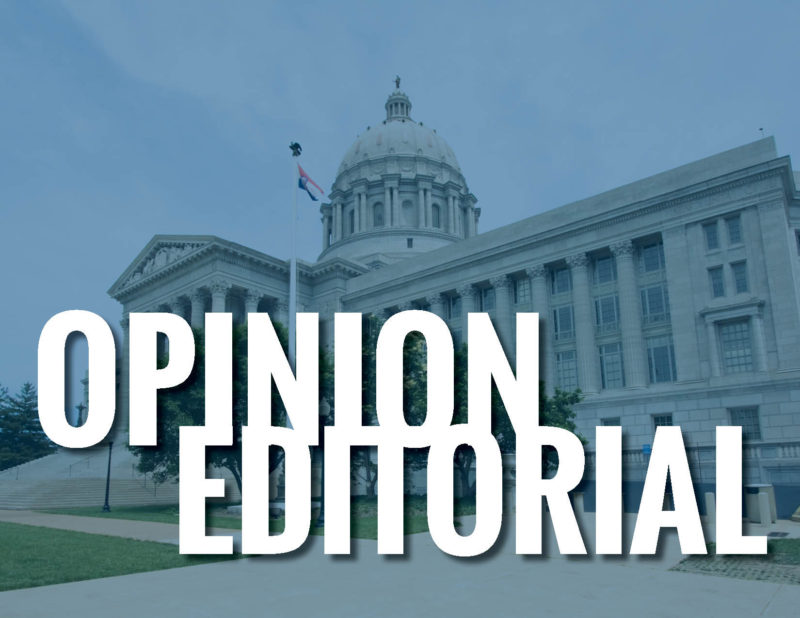
Tornadoes have again ravaged Missouri and Governor Mike Parson recently declared a state of emergency in response to recent flooding along the Missouri and Mississippi River systems as a “result of release from upstream reservoirs, snow melt and excessive rainfall.” As thousands of Missourians start rebuilding in the wake of the devastating disasters and more still prepare for the future, they must be able to reinforce and build stronger homes that can stand up to future tornadoes and floods. State lawmakers can help them do this by passing legislation to expand a Missouri program to include affordable disaster resiliency renovations for all homeowners.
While homeowners cannot predict when Mother Nature will strike next, what they do know is that Missouri faces increasingly severe weather threats. A 2018 study, for instance, found that nearly 500,000 Missourians are vulnerable to flooding — 25 percent more people than previously thought. Meanwhile, researchers said last year that a southeastern shift in “Tornado Alley” could lead to more tornadoes touching down in Missouri.
This severe weather is also causing an increasingly severe financial toll, with March’s flooding expected to result in more than $3 billion in damage. This comes on the heels of the 2017 spring floods that cost the state nearly $90 million. As the threat of severe weather grows, Missouri homeowners need to prepare their properties to better withstand rising waters and stronger winds. For most homeowners, however, these types of mitigation efforts are often out of reach because of high upfront costs.
But state lawmakers can take an important step toward making disaster mitigation more accessible by passing legislation to expand a home improvement financing program known as Property Assessed Clean Energy (PACE). PACE is not traditional financing; it is a special assessment that homeowners voluntarily add to their property as a way to pay for the improvements. Homeowners pay no upfront costs and can access low-rate, fixed-term financing; and, as a revenue neutral public-private partnership, the program does not use any public funds to finance critical property improvements.
In Missouri, thousands of property owners have already used PACE to finance $85 million in upgrades such as efficient HVAC units, energy-efficient windows and doors and solar panels, all of which help make homes more efficient while reducing monthly energy bills.
In other states, property owners can already use PACE programs to finance critical disaster preparation renovations and upgrades, including impact-resistant windows, wind-resistant roofs and “wet-flood proofing” that allows water to enter and exit a property in a way that causes the least damage possible. In Missouri, however, property owners can only use PACE to pay for energy-efficiency and renewable energy projects such as solar.
Encouraging disaster mitigation efforts not only protects people and properties, it is also saves money for communities in the long run. For instance, every dollar spent on federal disaster resilience efforts produces an average of six dollars in savings. By making disaster mitigation eligible under PACE, Missouri homeowners can make the same sound financial investments in their properties.
PACE has also proven to benefit communities in the eye of the storm. A recent study of the PACE market in Florida conducted by the Schwarzenegger Institute at the University of Southern California found that hurricane mitigation projects financed by just one PACE provider will result in more than $500 million in savings for the state in avoided disaster losses and more than $1 billion in insurance savings for consumers.
The Missouri PACE program is a touchstone example of successful economic development policy, but the program also needs to be protected from opponents in other competing industries. Legislation was introduced this last session at the Capitol (HB215 and SB173) that would curtail the success of Missouri PACE by injecting over-reaching regulations and California-like state bureaucracy to the program. This legislation was being pushed by bankers who oppose customer choice for homeowners and see PACE as a competitor. Putting aside the fact that Missouri should never adopt over-reaching and unnecessary regulations that would hurt small businesses, lawmakers — as a matter of principle — should always be on-alert before enacting any unwarranted increases in the size of state government and bureaucracy.
Making disaster resiliency more affordable and accessible is common sense, but as the recent tornadoes and flooding has made so tragically clear, it is an increasingly urgent need that can save lives, homes and money. Lawmakers should explore every option available for helping Missourians prepare for the next storm. Expanding and protecting the state’s PACE program is a smart first step.

Byron DeLear is an author, media producer, and an executive for Ygrene Energy Fund, a leading national PACE provider. DeLear has designed and administers PACE programs in Missouri and Arkansas. The Missouri PACE program has created or retained more than 1200 good-paying jobs without any increases in public spending.



